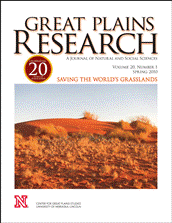Center for Great Plains Studies

Great Plains Research: A Journal of Natural and Social Sciences (through 2013)
Date of this Version
Spring 1999
Document Type
Article
Abstract
During the 1980s crisis in the agricultural economy, some observers claimed that many towns were too small, too isolated, or too distant from larger population centers to survive in times of economic turmoil. We decided to evaluate these assumptions through a series of in-depth case studies of thriving small communities in the Great Plains. The communities we studied fit the general description of towns that were doing better than expected. Using an anthropological approach, the teams of field researchers from the Heartland Center for Leadership Development visited communities, ranging in size from 300 to 6,000, in Colorado, the Dakotas, Kansas, Nebraska, and Texas to interview opinion leaders, positional leaders, and average citizens. These findings were updated recently through telephone interviews. The findings suggest that leadership, rather than size or location, is a clearly critical factor in whether or not a community survives. This article summarizes the research approach, reviews examples of local leadership behaviors and community development strategies that illustrate these characteristics, reflects on the characteristics commonly shared in thriving small towns, and offers some ideas for additional research that may add to this or related bodies of knowledge.


Comments
Published in Great Plains Research 9 (Spring 1999): 115-35. Copyright © 1999 The Center for Great Plains Studies, University of Nebraska–Lincoln. Used by permission. http://www.unl.edu/plains/publications/GPR/gpr.shtml